Recent Articles
Popular Makes
Body Types
2016 Chevrolet Malibu Hybrid Road Test and Review
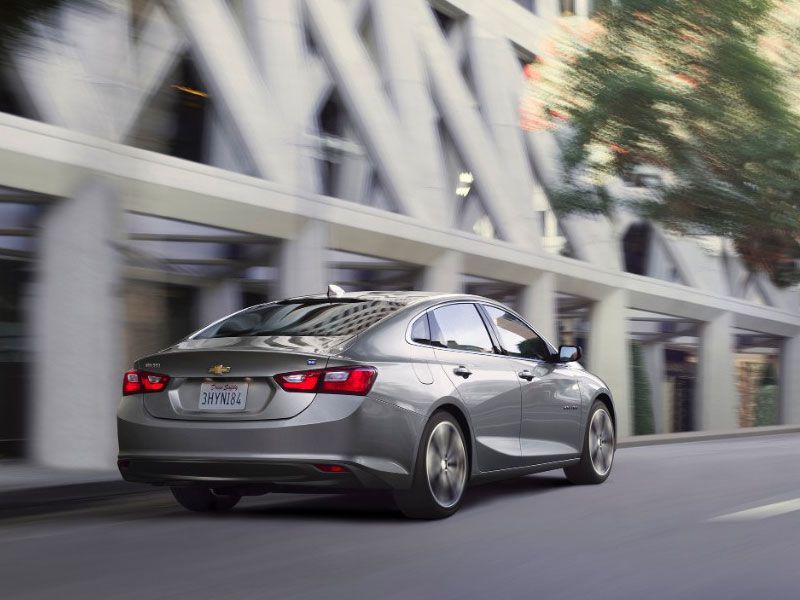
2016 Chevrolet Malibu Hybrid rear view ・ Photo by General Motors
It’s easy to forget that the 2016 Chevrolet Malibu Hybrid is actually a hybrid. There’s no special styling that makes it stand apart from the rest of this midsize sedan range. There are no large screens in the dash dedicated to displaying hybrid-specific information. The driving experience is also incredibly similar to that of a regular car, even down to having decent tires instead of harsh “low rolling resistance” rubber. Then the realization dawns that gas station visits have been less frequent, and that the fuel gauge has hardly moved.
This model year sees a completely new generation of Malibu, so a lot of the range’s attributes (such as comfort, equipment and safety) are all part of the Hybrid’s package, too, which you will see as we go into greater depth.
Pricing
The 2016 Chevrolet Malibu Hybrid starts at $28,645 (including destination charges) and is equipped much like the regular counterpart’s LT trim. That includes 17-inch alloy wheels, keyless entry with push-button start, heated mirrors, vents in the rear for the air conditioning, 8-way power adjustable driver’s seat, ambient cabin lighting, rearview camera, heated mirrors, LED daytime running lights, 4G LTE connectivity, mobile Wi-Fi for up to seven devices, Bluetooth, 6-speaker audio system with satellite radio, and General Motors’ OnStar services.
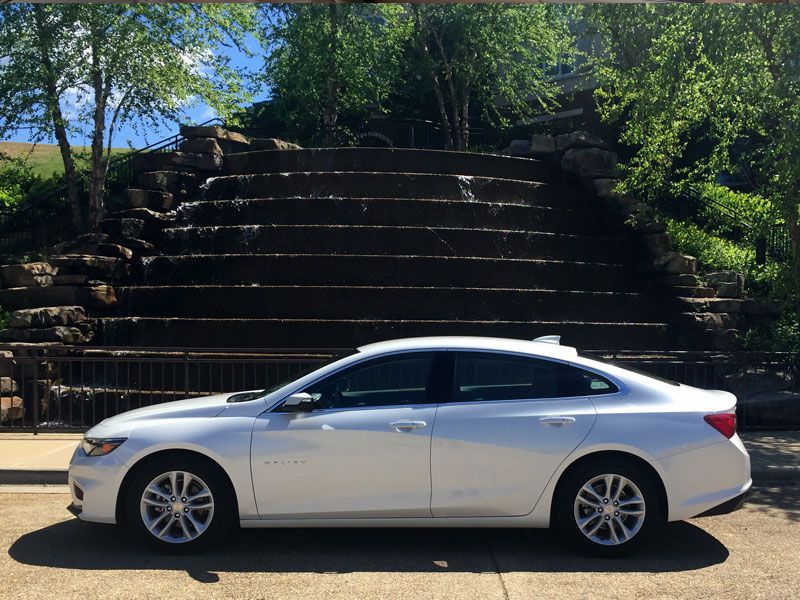
Photo by Colin Ryan
Design
As mentioned before, there’s nothing about this car that declares it instantly as a hybrid, including the design. The only defining mark on the car sits on the trunk lid where a small badge with the letter H sits just over the right tail light. On the other hand, there’s also nothing about the overall appearance that really pops.
Everyone has their own tastes, but the whole Malibu range (not just the hybrid) veers so much toward the generic that it might serve Chevrolet well to be more adventurous with its designs. Then again, a lot of people prefer cars that don’t call attention to themselves.
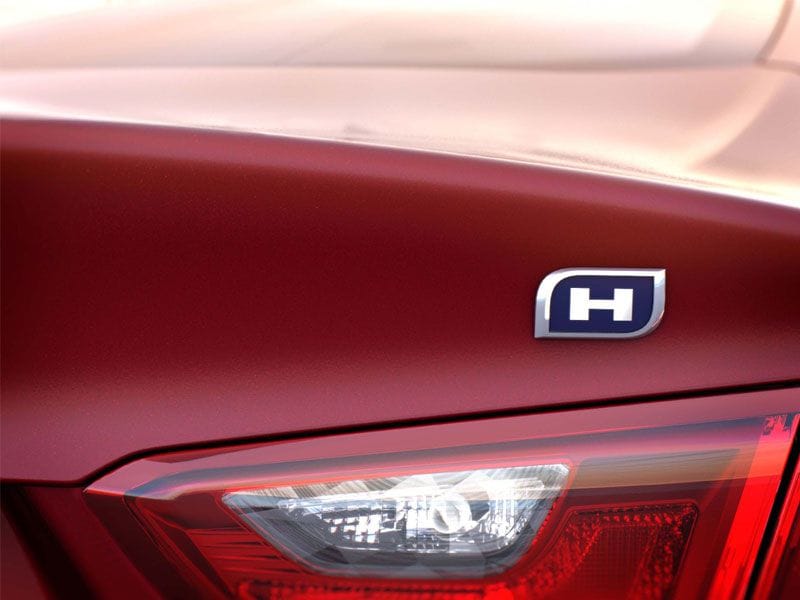
Photo by General Motors
Comfort and Cargo
For the most part, the cabin remains quiet. It’s only over those concrete sections of freeway that any kind of road noise intrudes. Even then, it’s more than bearable. The engine is similarly subdued during daily driving conditions.
Hybrids typically have a stop/start function for the gasoline engine. In this case, the action is barely perceptible. There’s no abrupt thump when it shuts off and no shudder when it fires up again.
Passenger space in both rows is plentiful. But a considerable rectangular chunk of the trunk space is given over to the battery pack, reducing luggage area as compared to the regular Malibu’s 15.8 cubic feet to 11.6 cubic feet. That’s still a useful size.
There’s padding where elbows make contact with things like the center armrest, door panel and a section of the door’s top. Other parts of the cabin, though, have harder plastics that lessen the comfort level.
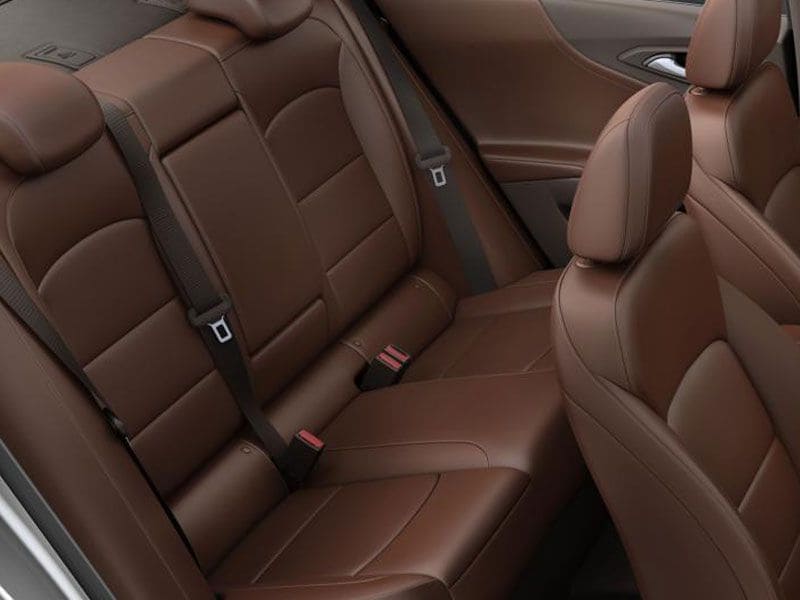
Photo by General Motors
Features and Controls
Brakes in hybrids tend to feel strange, because they use regenerative retardation, capturing energy that might otherwise be lost and storing it in the battery pack. Clever stuff, but the downside has been a brake pedal that requires getting used to. Chevrolet has developed something it calls “blended braking” where the action seems much more like a regular car’s.
One easy way to make the gallons go further is to put the transmission into L1 or L2. These are not low gears but levels of energy regeneration from engine braking (how quickly the car slows down just by lifting off the throttle). In normal driving, L1 still provides plenty of acceleration and smooth deceleration. Clicking down to L2 works well when there’s traffic up ahead. This might sound like too much to think about, yet it soon becomes routine. Or a driver could just select D and leave it at that.
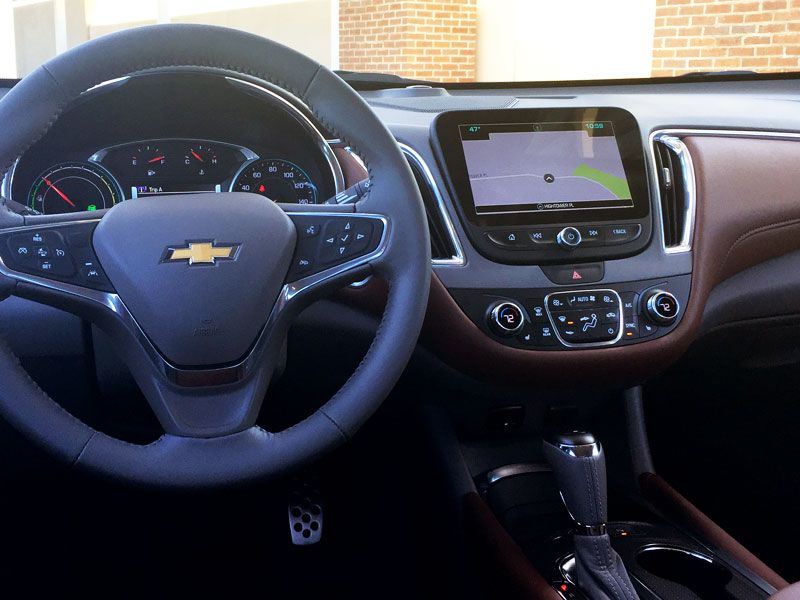
Photo by Colin Ryan
Safety
Standard safety equipment includes the mandatory anti-lock brakes, traction/stability control and no fewer than 10 airbags. Blind spot monitoring with rear cross-traffic alert, lane keeping assistance, and forward collision warning with automatic low-speed braking are all optional.
This generation’s regular Malibu has scored a maximum of five stars in the National Highway Traffic Safety Administration (NHTSA) crash test program, including five stars for both front and side impact protection.
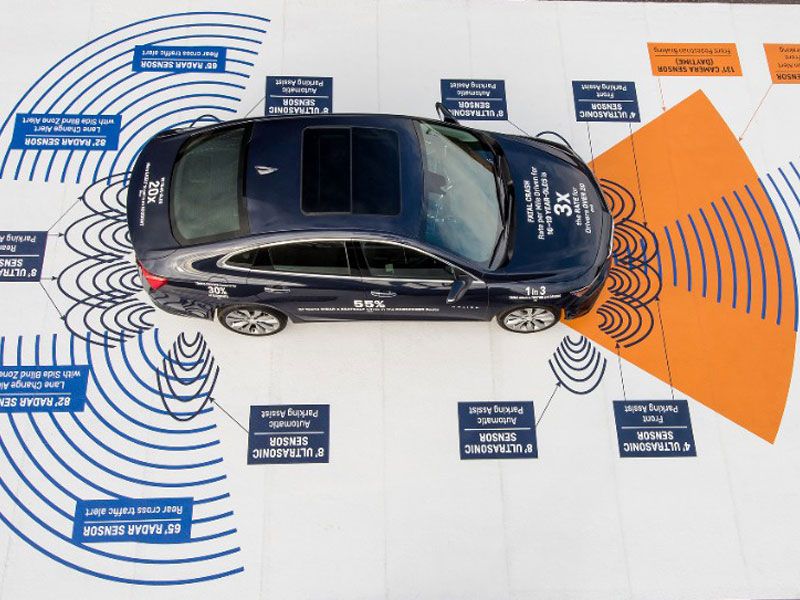
Photo by General Motors
Engines and Fuel Economy
All the hybrid hardware is derived from the Chevrolet Volt, although this Malibu is not the plug-in kind. Two electric motors and a lithium-ion battery pack are joined by a 1.8-liter 4-cylinder gasoline engine. Total system output is 182 hp and 277 lb-ft of torque. Power goes to the front wheels through a continuously variable transmission (CVT).
Fuel consumption is rated at 47 mpg city, 46 mpg highway and 46 mpg combined. This set of figures is better than any rival can achieve (although the Volkswagen Jetta Hybrid returns 48 mpg on the highway). In the real world, it doesn’t take much effort to average 48 mpg on a varied route.
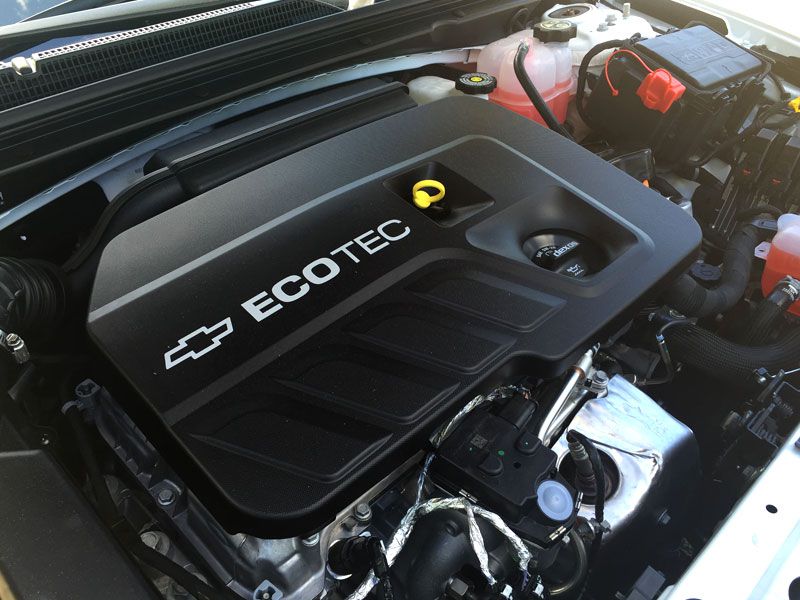
Photo by Colin Ryan
Performance
No one usually buys a mainstream midsize sedan hybrid for breathtaking acceleration. That said, the Malibu Hybrid makes decent progress for everyday driving, with sufficient push to reach freeway speeds and perform the occasional overtaking pass. Electric motors are particularly appreciated for their near-instant torque; the electric side of the Malibu Hybrid (there are two motors) can propel the car up to 50 mph before the gasoline engine kicks in. So there’s plenty of responsiveness and flexibility. For a commuting machine, there’s a lot of appeal.
There’s also a great deal of comfort, since the ride quality achieves that fine balance between stability and suppleness. Virtually every new car has electrically assisted steering, because it enables driver assistance features and helps with fuel consumption. The Malibu Hybrid’s steering is light when the car is pointed straight ahead and becomes heavier as the wheel is turned. But it’s not particularly linear in its operation.
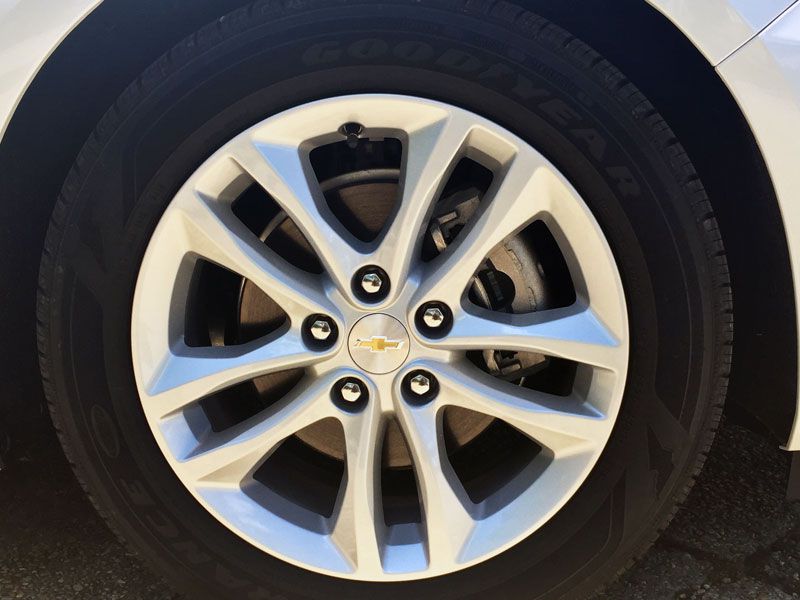
Photo by Colin Ryan
Final Thoughts
There are several extra details that make the Malibu Hybrid interesting. For example, it recovers heat from exhaust gases to bring the engine up to its working temperature sooner, therefore less time is spent operating below maximum efficiency. It does the same thing to get the cabin warm, so the heating system isn’t worked so hard.
Apple CarPlay and Android Auto are compatible with the infotainment system, bringing smartphone functionality and the ability to use various apps. And there’s a Teen Driver feature where parents can manage audio system volume, speed warnings and other aspects, and even check behavior with an in-vehicle report card.
When gas prices are low, recovering the extra cost of a hybrid from fuel savings isn’t really possible. So consider a car like this from an emissions point of view. It’s designed to be far less polluting than many vehicles.
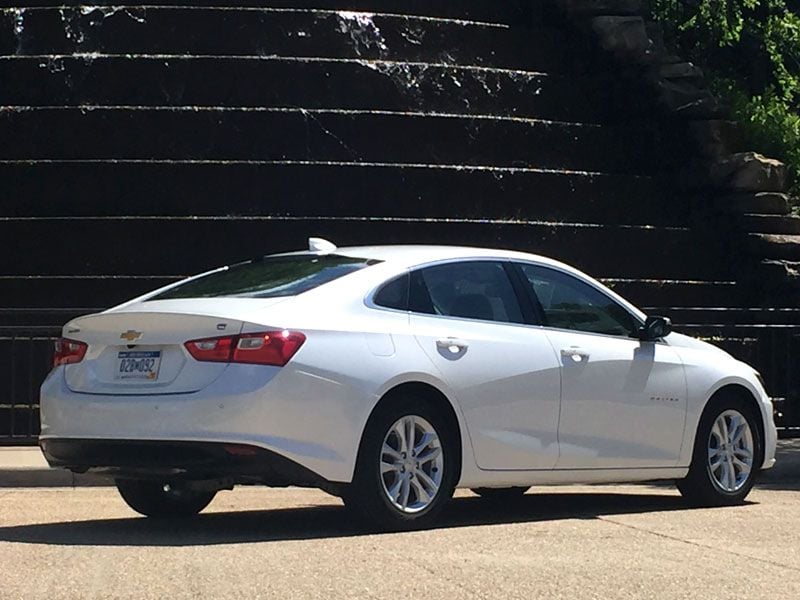
Photo by Colin Ryan